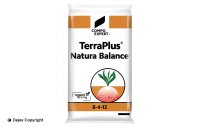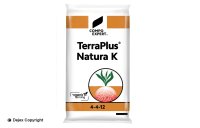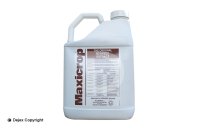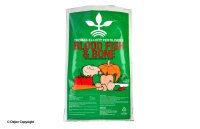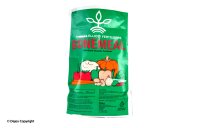Organic fertilisers are those that have been produced naturally using a variety of mineral sources. They can be added to soil or plants to provide them with the nutrients needed to promote good growth and plant health.
There are a range of different materials that can be used to make organic fertilisers, including animal waste (manure), plant waste (compost), and treated sewage sludge, to name just a few. Let’s take a closer look on the kinds of products that are typically available in the UK.
The different types of organic fertilisers
Minerals
Some specific minerals that do not have to be chemically altered, such as limestone, can be used to improve soil quality and stimulate microbial growth. ‘Liming’ soil helps to raise its pH, increasing biological processes and enabling other nutrients to flow more freely through it.
Peat
One of the most widely used types of organic fertiliser in the country, peat is plant material that has only partially decomposed. It’s much less dense, so it’s less likely to compact when added to the soil, improving soil aeration and drainage and creating a better environment in which plants can grow. It also helps to improve soil microbial health.
Animal waste (manure)
Manure is waste made by animals that have been raised for meat, hide, dairy or poultry purposes. As you can imagine, it’s an abundant resource. It can be used to increase soil stability by increasing organic matter and improving water filtration, plus add bacteria diversity. Horse manure is one of the more common types used in gardens and has an almost perfect balance of carbon to nitrogen for composting purposes.
Plant waste (compost)
Although plant waste isn’t great for providing nutrients to plants, it can be really beneficial when it comes to improving soil stability. It can also help microorganisms multiply, which in turn will break more of the decaying plant matter into elements that can be absorbed by other plants.
Plants can also be used in the form of grain meals, such as soybean or alfalfa, which can be spread on the soil to boost more well-developed plants.
Treated sewage
Sewage sludge, also known as biosolid material, can be treated and used as a fertiliser once deemed biologically safe. It’s usually used on non-agricultural crops and cannot be used in many types of organic food production.
How to use organic fertilisers
The best way to apply organic fertilisers to soil is by spreading them on the surface or in planting beds. As most plants have feeder roots that sit towards the top of the soil, you shouldn’t need to dig down too far, unless you’re applying something with a higher phosphorus level; this type of fertiliser will move much more slowly and should be spread further down the root at a depth of around 15-30cm. It will require breakdown by soil bacteria into a plant-available form.
Manure and compost will often come in their natural format in bags. However, many other organic fertilisers will come in dehydrated pellet form or as a liquid. It’s always best to read the label to understand how to get the most out of your specific fertiliser based on the type of soil you’re dealing with and the kinds of plants you’re cultivating.
How long do organic fertilisers take to work?
In order for organic fertilisers to work, they have to begin decomposing in the soil to release their nutrients. This process can take around 2 to 6 weeks, depending on the temperature and level of moisture in the soil, amongst other factors. 